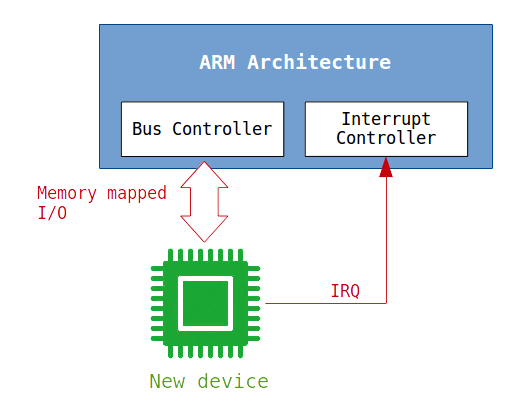

qemu-img convert -O qcow2 rootfs.ext2 rootfs.qcow2 The RFS images can also be converted to a native Qemu format using the qemu-img utility. If dhcp is in use, this can be simplified to the following:
#QEMU SYSTEM ARM HOW TO#
Here is an example of how to specify the NFS root configuration via -append: The Qemu -append option allows additional arguments to be passed to the Linux kernel. The can be uncompressed into an existing NFS setup and then mounted on the Qemu target. It is often simpler to use NFS for development with an embedded target. We then use the offset to loop mount the partition, create the filesystem, and copy the contents from our archive:Īdditionally, on x86 targets we can use the EXTLinux bootloader as a simple way to boot our system from this raw image.ĭd if=/usr/share/syslinux/mbr.bin of=$img conv=notrunc.We can get the offset of our partition from within the image by using the following command:.We set up a partition table using the GNU Parted utility.This creates a sparse file of 1 gigabyte.ĭd if=/dev/zero of=$img bs=1 count=1 seek=1G A new image is created (named rootfs.raw) using dd.The following procedure steps through a common setup. This can be used to generate a raw disk that can then be passed to Qemu. The most basic LinuxLink RFS output format is the vanilla compressed tar archive. When ready, qemu is passed the following options (along with -append to tell the kernel what device to mount as root): -append 'root=/dev/sda rw' -drive file=rootfs.ext2 RFS as RAW disk This can be uncompressed and passed directly to the Qemu invocation.Īdditionally, this can be converted to ext3 using: tune2fs -j rootfs.ext2Ĭonverting from ext3 to ext4: tune2fs -O extents,uninit_bg,dir_index rootfs.ext2 The RFS can be generated into a compressed EXTFS image if so configured by the LinuxLink Factory. These kernel images can be passed directly to the Qemu invocation. The x86/x86_64 targets default to bzImage. Typically for the qemu_versatile target, the image format will be zImage. The Linux kernel can come in several formats. Installing the platform development environment will provide the above along with a cross toolchain for further target development and debugging. The following are included in all platform builds: The Timesys LinuxLink factory produces all of the input files that Qemu needs. The basic qemu invocation for an x86 target would be: Qemu defaults to x86 emulation when invoked as qemu. Qemu supports the ARM Versatile and Versatile Express targets through the qemu-system-arm utility. Other targets will work with Qemu, but may require customizing the kernel configuration for the hardware that Qemu emulates on those targets. These are directly supported by the qemu_versatile, qemu_vexpress, qemu_x86, and qemu_x86_64 LinuxLink targets, respectively.
#QEMU SYSTEM ARM PC#
This document will focus on the use of the ARM Versatile baseboard, Arm Versatile Express, and the PC (x86 or x86_64 processor) emulated systems. Qemu supports a large variety of targets. This will ensure the cross tools and Timesys provided Qemu are found first in your path. $ export PATH=/path/to/sdk/toolchain/bin:$PATH

The installed SDK toolchain will then need to be added to your PATH via: To enable Qemu, enable the Qemu option within Toolchain Configuration.

Timesys provides Qemu within the target cross toolchain in the SDK.
#QEMU SYSTEM ARM MANUAL#
The Qemu Manual covers much of the functionality provided by Qemu along with advanced configuration examples not covered here. Using LinuxLink tools with Qemu is easy, as the platform files built can be fed directly to Qemu with minimal configuration. Qemu is an open source machine emulator that can be useful for embedded design and testing.


 0 kommentar(er)
0 kommentar(er)
